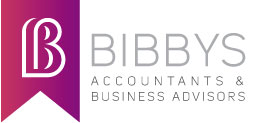A great business plan is crucial to the success of any small businesses – whether you are just starting up, looking for a new investor, or identifying new areas for future growth.
“A good plan is like a road map: it shows the final destination and the best way to get there.”
H. Stanely Judd
Your business plan will provide you with a framework to highlight the direction you plan to take your business in, and a benchmark to track your progress against.
Most business plans focus on the next 3-5 years, and lay out the route a business intends to take during this time-frame. They are highly effective as they capture your business goals in writing, as well as how you intend to achieve them, which greatly increases your chances of success.
Here are the 8 key elements of a great small business plan…
1. Executive Summary
This forms the first page of your business plan, but it is likely you will write it last, once you have completed all the other areas. It is a brief ½ to 1 page synopsis of the key points of the rest of the business plan.
2. Market Analysis
This is where you detail your knowledge of your industry sector, the emerging trends, opportunities and threats, and what your competitors are doing. This information enables you to define your target market and the positioning of your company, which will feed into your pricing, distribution and marketing strategies.
3. Company Description
The company description is a high level overview of your company, and should include information about the nature of your business as well as the factors that you believe will make your business a success.
4. Organisation and Management
This section details your company’s organisational structure: hierarchy of decision makers, accountability, skills and expertise of management and staff, and clarification of who will cover the key areas of production (sales, marketing, finance and administration). In addition it needs to cover systems and procedures used to manage accounts, sales, stock control, quality control, etc.
5. Service/Product Line
This section focuses on describing your service/product in detail. What are you selling? What are the benefits (in the eyes of the customer)? What problems does it solve? How is it different/better than what your competitors offer? Why should customers buy from you?
6. Marketing and Sales Strategies
This is the lifeblood of your business: marketing attracts customers, and customers generate sales. This is the section for defining how you will promote your offering to attract prospects and retain customers. Look at what has worked well for competitors, as well as what has worked for you in the past, and adapt to suit current goals. This section will constantly evolve as you learn which activities generate the best results.
7. Financials
This section must include sales projections, planned expenditure, and most importantly a cash flow forecast proving that the business can survive. See our previous blog post on small business budgeting for more help with this.
8. Funding Requirements
This final section will focus on any funding you might require to grow your business, or to keep it afloat if your projected cash flow has highlighted any lengthy gaps between planned expenditure and projected income.
A great business plan isn’t meant to be written just once – it works best as an evolving document that will adapt as your business and environment change. It needs to reflect your learnigns from successes and failures, and should be re-visited at least quarterly, although monthly is best.
Once you get into the habit of regularly updating your small business plan, you will find yourself looking forward to your monthly reviews, and gaining satisfaction from being in control of your business success.
If you’re a small business owner in need of expert accountancy and business management advice please get in touch to find out how we can help you.

